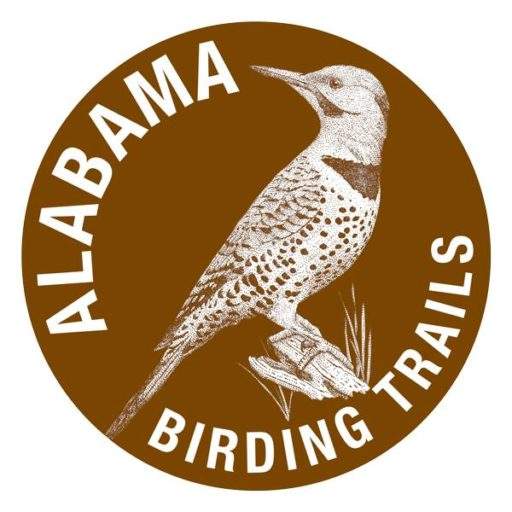Coastal, Eastern Shore-Mobile Bay Causeway & Blakely Island Loop | Mobile | Best Seasons: Fall | Spring | Winter
The Blakely Island Mud Lakes are a complex of disposal ponds that host a wide array of shorebirds and waterfowl. After parking , walk the dirt road up the dike. Continue east on the dike road, remembering not to leave the dike for any reason. Depending on water levels and time of year, the first pond on the right (south) often offers the best conditions for viewing waterfowl like Black-bellied Whistling-Duck, Mottled Duck, and Northern Shoveler, and various shorebirds, gulls and terns. This is also one of the best places to find White-rumped and Baird’s Sandpipers in late spring.
GPS: N30.72378 W-88.03659
IMPORTANT NOTE: This notice only applies to the Blakeley Island Mud Lakes Disposal Areas. The Mud Lakes are former industrial waste treatment sites and the waters in these dredge material management ponds can be extremely caustic. The ponds are currently used for the disposal of dredge materials by the U.S. Army Corps of Engineers and the Alabama State Port Authority. Do not leave the road or the tops of the dikes for any reason! Entry to the upper ponds is by permit only and requires the annual submission of a liability waiver form to the Alabama State Port Authority.
The AOS web page also has a map indicating which ponds are currently open to visitors. Insect repellent is in order. Be advised: any of the following trips are potentially long, hard, hot walks, so prepare accordingly.
-
Blakeley Island: Permit for Blakeley visitation
-
Access to Blakeley Island is only allowed with a valid permit on file with the Alabama Port Authority. Attempts to access Blakeley without filing the proper permit annually will result in a loss of visitation privileges for all birders. We can not stress strongly enough – please do NOT attempt to visit without first filing a permit! Please complete the Blakeley permit here: Permit Registration: https://www.alports.com/birding/
-
Water levels can fluctuate daily.
-
There are no facilities in the Mud Lakes and summer heat makes heat illness a real danger. Be aware of your body, bring water, and be careful if you spend any time there while it’s hot.
DIRECTIONS: If following directions provided in the Coastal Birding Trail booklet, continue north from the traffic light to the locked gate [0.8], access Mud Lakes, park well out of the way, and walk the dirt road up the dike. Continue east on the dike road, remembering not to leave the dike for any reason.
Amenities Available:
Nearby Sites

Airport, Dauphin Island
Dauphin Island Airport is set in a salt water marsh in which may be found Clapper Rail (common), Virginia Rail and Sora are fairly common(fall and winter), though secretive. Yellow Rail is very rare in winter as is Black Rail most of the year. Nelson …
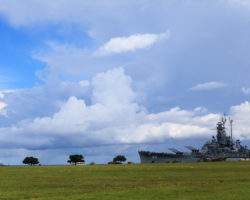
Battleship Park
Battleship Park presents the birder with a diversity of habitat to explore and a great variety of birds to observe. Pinto Pass and the mudflats of Mobile Bay filled with waterfowl in winter and shorebirds during migration, short grass lawns for dowit …
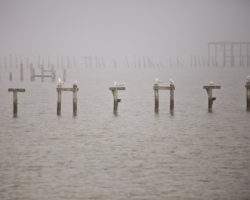
Bayfront Park
Look for gulls and terns on the pilings in the bay and shorebirds along the shoreline. From the shoreline, walk the boardwalk to an inland marsh. Look closely for Least Bittern and Clapper Rail. During fall and winter, Virginia Rail and Sora are regu …
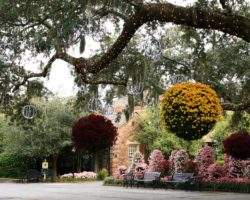
Bellingrath Gardens
The entire 900-acre complex is a bird sanctuary and there is an observation tower overlooking the Fowl River and salt marsh. Although good year-round, birding potential for neotropical migrants increases during the spring and fall months. Cruises thr …
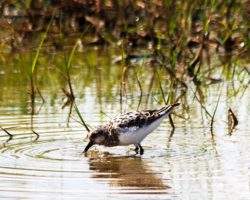
Blakeley Island – North Blakeley Disposal Area
The Mud Lakes on Blakeley Island are well known to Alabama birders as one of the best spots in South Alabama for shorebirds and waterfowl. The Island, at the western end of the Mobile Causeway, along the east side of US 90A, can be reached from eithe …
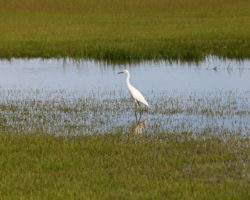
Blakeley Island – South Blakeley Disposal Area
At the top of the dike, scan the large ponds in various stages of management; you must stay on the perimeter dikes. Best areas usually are in the northwest and southwest corners of the pond. This is a regular site for Black-bellied Whistling-Ducks, w …
